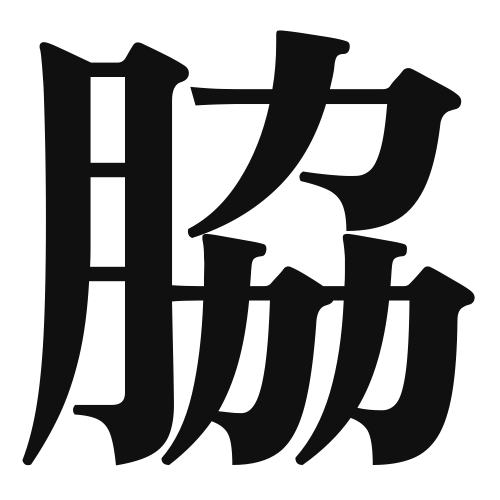1. Overview of Meaning
The kanji “脇” (waki) primarily means “side” or “armpit.” It refers to the area on the side of the body, often associated with the armpit region, but can also denote the side of an object or a person.
2. Formation and Radical
Formation of the Kanji: The kanji “脇” is a phono-semantic compound (形声文字), which means it combines a semantic component and a phonetic component. The left part “肉” (meaning “meat” or “flesh”) indicates a relation to the body, while the right part “ワキ” provides the pronunciation.
Radical: The radical of “脇” is “肉” (niku), which is commonly associated with body parts or flesh.
3. Examples of Usage
Common Words and Phrases:
- 脇役 (waki-yaku) – supporting role
- 脇道 (waki-michi) – side road
Example Sentences in Daily Conversation:
- 彼は脇役として映画に出演しています。 (Kare wa waki-yaku to shite eiga ni shutsuen shiteimasu.) – He is appearing in the movie as a supporting role.
- 脇道に入ると、静かな公園があります。 (Waki-michi ni hairu to, shizuka na koen ga arimasu.) – If you take the side road, there is a quiet park.
4. Synonyms and Antonyms
Similar Kanji:
- 側 (soku) – side, which can refer to the side of an object or person but is more general than “脇.”
Antonyms:
- 中心 (chūshin) – center, which represents the opposite of the side or periphery.
5. Cultural and Historical Background
Relation to Japanese Culture: The concept of “脇” is significant in various aspects of Japanese culture, including traditional arts and theater, where supporting roles (脇役) are essential for the overall performance.
Proverbs and Idioms: There are expressions like “脇が甘い” (waki ga amai), which means “to be careless” or “to have a weak side,” often used to describe someone who is not paying attention to details.
